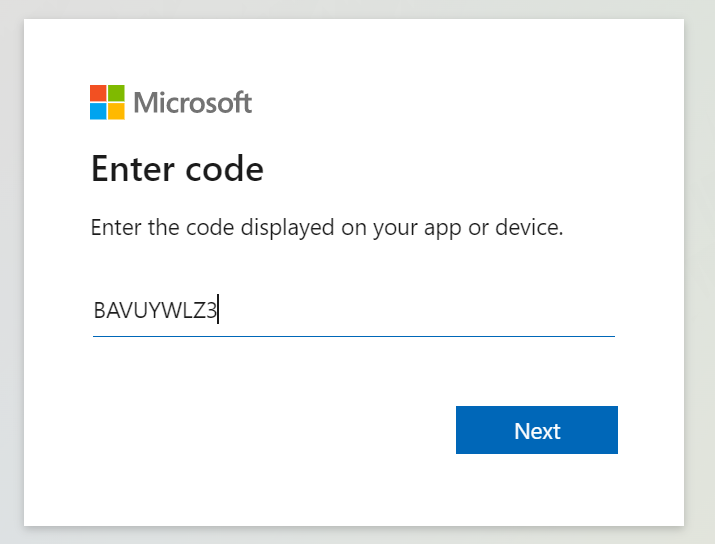Get started with CLI Microsoft 365 for Power Platform people

tl;dr
CLI for Microsoft 365 is an amazing tool to manage your Microsoft 365 tenant and SPFx projects. But did you know, that also people working with Power Platform can massively benefit from using it?
To convince you, I chose a use case, that will probably relate to lots of people, but please be aware, that CLI for Microsoft can do so much more!
Use case: App registrations in Azure Active Directory
Very often when working with Power Automate or Power Apps, we want to leverage the power of Microsoft Graph API. To do so, we need to authenticate against Graph using Azure Active Directory (Azure AD) and register an application in the Azure portal at portal.azure.com. Depending on permissions, redirect URI, secret etc. we need to perform several steps and take note of certain outputs. Wouldn’t it be nice if the entire app registration process was rather a one line command that automatically outputs the values we need?
After installing CLI Microsoft 365 and logging in, all we need to do is
m365 aad app add `
--name 'myApp001' `
--redirectUris 'https://global.consent.azure-apim.net/redirect' `
--platform web `
--withSecret `
--apisDelegated 'https://graph.microsoft.com/People.Read.All' `
--grantAdminConsent `
What this does is registering an application with the following parameters:
- Displayname of the app is
myApp001 - Redirect URI is
https://global.consent.azure-apim.net/redirectthat is what you need for custom connectors in Power Platform - It does create a secret (and will output it)
- It has delegated permissions for
People.Read.Allon Graph API - Admin consent is already granted
If we run this command (and we can do this as one-line as well without the backticks ` at the end of each line)
m365 aad app add --name 'myApp001' --redirectUris 'https://global.consent.azure-apim.net/redirect' --platform web --withSecret --apisDelegated 'https://graph.microsoft.com/People.Read.All' --grantAdminConsent
we get the following output:
{
"appId": "164298a8-504c-4234-a43a-XXXXXXXXXXXX",
"objectId": "02b7577e-4d6b-478a-b34c-XXXXXXXXXXXX",
"tenantId": "b469e370-d6a6-45b5-928e-XXXXXXXXXXXX",
"secrets": [
{
"displayName": "Default",
"value": "XXXXX~5FUlgaKtYEAJ-XXXXX~DWsnj6yerYATXXX"
}
]
}
which means, that we can use appId and the value of the secret in our custom connector or in the HTTP action of our Power Automate flow.
Get started with CLI for Microsoft 365
If you now want to try this out as well, you need to follow these steps:
- Install node.js
With node.js comes npm and we will install CLI for Microsoft 365 with npm. If you don’t have npm or node.js installed:
- Open node.js
- Select 18.12.1 LTS
- Install node.js
- Install CLI for Microsoft 365
- Open a terminal of your choice, I use the built-in terminal of Visual Studio Code
- Type
npm i -g @pnp/cli-microsoft365to install CLI for Microsoft 365 globally
- Login
- To login, type
m365 login - You will see a message like this:
"To sign in, use a web browser to open the page https://microsoft.com/devicelogin and enter the code BAVUYWLZ3 to authenticate."- Do exactly that. Copy that code, open the URL and paste the code. - Select Next
- To login, type

Now log into the tenant you want to connect with using your username and password (+ optional MFA)

You can close the https://login.microsoftonline.com/common/oauth2/deviceauth page again
💡 Until you type m365 logout, you will stay logged in.
- Try out to register an app
Now lets see if that worked! Register your own application and validate in the Azure portal.
Feedback and what’s next?
If you liked this experience, maybe you want to dip your toes even a bit further into CLI for Microsoft 365 - here is why you should absolutely consider that:
- it’s open-source and we are all here to learn
- it’s an amazing project with the most awesome contributors
- it has a lot of super-helpful commands around Power Apps, Power Automate, and more in Power Platform - more to come! Any ideas?
Published on:
Learn moreRelated posts
Microsoft 365: New functionality and prices in 2026
A range of security and AI enhancements have been announced for the Microsoft 365 suite of products in 2026, along with some small price incre...
Automating Microsoft 365 with PowerShell Update 19
Update #19 of the Automating Microsoft 365 with PowerShell eBook is now available. Subscribers can download the updated PDF and EPUB files fro...
Teams admin center: Auto‑updates for Teams Android device firmware and apps will be paused during year‑end holidays
Auto-updates for Teams Android device firmware and apps via Teams admin center will pause from December 20, 2025, to January 12, 2026, to ensu...
OpenAI’s GPT-Image-1.5 model is now available in Microsoft 365 Copilot
Microsoft 365 Copilot will replace GPT-4o with OpenAI’s GPT-Image-1.5 from mid-December 2025 to late January 2026, enhancing image generation ...
Teams admin center: Messaging safety defaults changing to “On” by default
Starting January 12, 2026, Microsoft Teams will enable messaging safety features by default, including weaponizable file type protection, mali...
Microsoft Defender for Office 365: Admins can block external users in Microsoft Teams from Defender Portal
Admins can now block external users in Microsoft Teams via the Tenant Allow/Block List in the Microsoft Defender portal, controlling access an...
Microsoft Copilot (Microsoft 365): Word Agent
Word Agent helps you handle research, structure, and formatting so you can stay focused on your ideas. Use multi‑turn chat to refine your draf...
Microsoft Copilot (Microsoft 365): Suggested References in Copilot Notebooks
Users can now quickly enrich their Copilot Notebook with relevant Suggested References based on recent user work activity. Product Release pha...
Microsoft Copilot (Microsoft 365): PowerPoint Agent
PowerPoint Agent helps you build polished presentations with strong storytelling and visual structure. It streamlines research, formatting, an...
Microsoft Copilot (Microsoft 365): Recommended Notebooks in Copilot Notebooks
Users can quickly create new Copilot Notebooks via Recommended Notebooks based on recent user work activity. Product Release phase General Ava...